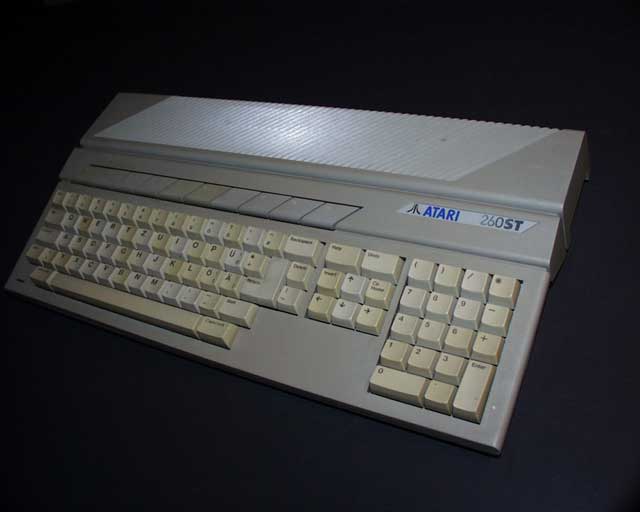The Atari 130 ST (ST means sixteen/thirty-two:
16 bit data bus & 32 bit address bus) was shown at the Winter
Las Vegas Consumer Electronics Show in 1985.
It was the great surprise of the show and was presented only six months
after Jack Tramiel bought Atari, Inc. (He later named it Atari Corp).
It was designed to be a "Macintosh Killer", and was jokingly called
the "Jackintosh".
It offered lots of features never found on home computers before:
16 bit microprocessor, lots of interfaces, standard MIDI interface,
high graphic resolution, lot of colors, enhanced GUI
(Graphic User Interface).
It was much more powerful and expandable than the Macintosh
(MIDI, graphics, colors, and the like) and competitors weren't very
numerous (Commodore 128, PC AT, & compatibles, and the old CP/M machines).
That explains why more than 6 million of Atari ST's were sold around
the world.
The Atari 130 ST was a prototype for the press demonstration and was
never released because of its small memory size : the complete
operating system couldn't fit in it.
It was replaced by the Atari 260 ST and the Atari 520 ST.
Despite its name, the Atari 260 ST was shipped with 512 KB of RAM,
because the 192 KB operating system left less than 64 KB of free RAM.
The Atari 520 STm has a built-in TV modulator, the Atari ST+ is a
520 ST with 1 MB of RAM.
The Operating System is TOS (Tramiel Operating System, later
renamed just "The Operating System") which is in fact no more than
the old CP/M 68K.
Notice that to make easy the transition from the PC to ST, all the
high level calls of the TOS (called GEMDOS) were compatible with
the DOS calls of the PC (int 21h).
It uses the GEM, which stands for Graphic Environment Manager,
GUI (from Digital Research) which has a striking resemblance to the
Macintosh GUI (windows, dialog boxes, desktop, desktop accessories,
& bitmap fonts) even if it is a bit less friendly than the Apple one.
The 260ST / 520 ST Operating System (TOS & GEM) is supplied on one
floppy disk and has to be loaded when the computer boots, it takes up
a lot of room in memory!
The BOOT Rom (Only two of the 6 sockets were used) presented a nice
colorful animated startup screen with a dialog box that asked the user
to insert the system disk.
The later 520 ST/STm and the ST+ has a built-in ROM OS.
It has several dedicated coprocessors for interrupt handling
(MFP 68901), sound (the old Yamaha YM 2149, found in MSX computers,
Amstrad or Oric), video (a custom chip called "Shifter"),
and memory (a custom chip called "GLUE" and the MMU).
(www.old-computers.com)
|


